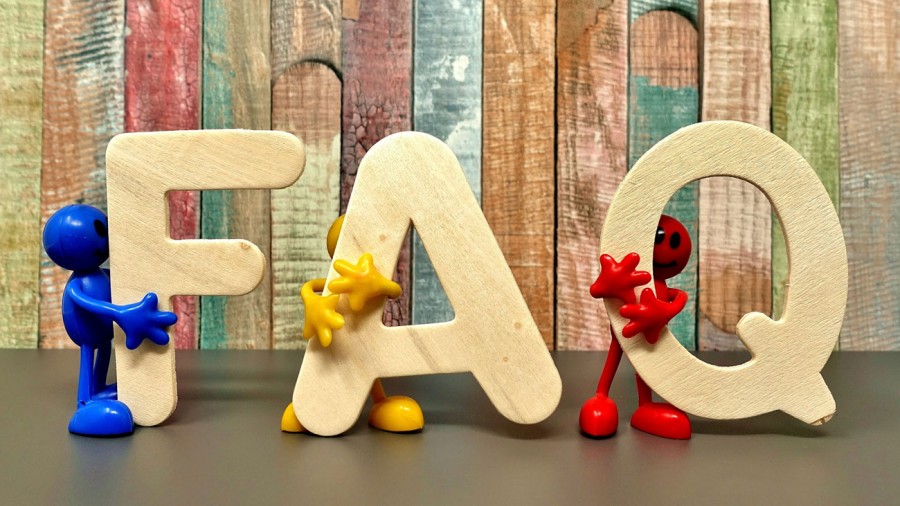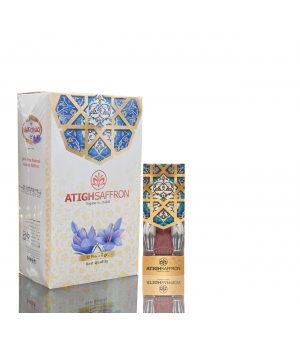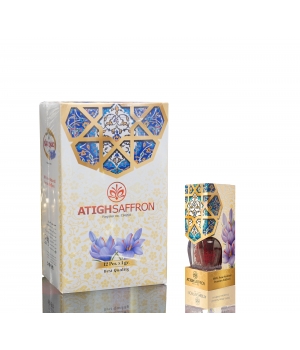-
WHERE DOES SAFFRON COME FROM?
Saffron has been farmed for more than 3000 years. The wild ancestor of saffron was Crocus cartwrightianus. Farmers developed new cultivars by choosing only those flowers with unusually long stigmas.
Specialists believe saffron was first documented in a 7th century BC amongst the Persian Assyrian communities. Since then, researchers have uncovered over 3000 years of medicinal saffron use, with local people treating over 90 ailments with saffron-based medicines and infusions.
-
WHY IS SAFFRON SO EXPENSIVE?
There are several reasons why saffron is expensive, but the main reason is the amount of work it takes to produce even small quantities. . To pluck 1kg of saffron from the saffron flowers, the threads or stigmas of around 170,000 - 250,000 flowers must be hand-picked & dehydrated, an amazingly labour-intensive job.
Furthermore, this process needs to happen before the sunrise in order to insure maximum potency and freshness—a fact which most large-scale producers ignore due to the additional costs that this creates.
- HOW MUCH SAFFRON SHOULD I USE?
Growing up in a Persian family we used saffron in almost everything, but in reality, you will not need more than half a gram or 0.017637 of an ounce in your stews or rice dishes to feed 4-6 people. So despite the high overall cost of saffron, a little bit goes a long way: cost per portion could be less than a dollar. This will depend, of course, on the quality/ character of the saffron and your purchasing source: the better the saffron, the less you’ll need to color and flavor your dishes
- WHAT IS THE DIFFERENCE BETWEEN SAFFRON THREADS AND POWDER?
Concerning the essence of saffron, its aroma and colour, there is no difference between saffron powder and stigma/ threads.
But for some dodgy companies, it's easier to add other material to the powder to increase the weight. Also saffron loses its aroma and colour faster in its powdered form, which is why we recommend you always buy your saffron as full threads and turn it into powder just before use.
IS YOUR PACKAGING RECYCLABLE/ REUSABLE?
Packaging and storage of saffron must be done scientifically as the flower is very sensitive to light and heat. So we have used containers specially designed to keep your saffron fresh and aromatic until you are ready to use it. These containers are reusable and environmentally friendly.
- WHAT IS THE SAFFRON PRICE PER KG?
We do sell our saffron and other products at wholesale prices to some of the best restaurants in the world all around the Europe, USA and Australia. If you wish to purchase saffron in more significant quantities and would like to know the saffron price per kg, please do not hesitate to contact us for more information. Saffron price per kg does fluctuate with international currency exchange rates, so we will be more than happy to provide the up to date saffron price per kg once we receive your enquiry.
- BESIDES COOKING WHAT ELSE CAN WE DO WITH SAFFRON?
Saffron has been used in ancient Persian medicine for a wide range of illnesses, including depression, because of its ability to lift the mood and to stimulate the secretion of mood-elevating hormones in the brain. Saffron is also used as an antioxidant and for patients who have Multiple Sclerosis (MS).It is documented and scientifically proven that saffron alleviates symptoms of PMS as well as Alzheimer’s. Currently, saffron is being tested in a wide range of scientific studies to determine its efficacy in treating cancer and other illnesses. The other main use of saffron is in the arts and as a robust natural dye in textile manufacturing.
- What is saffron?
Saffron is a variety of spice, derived from the Crocus sativus plant. It’s actually one of the most expensive spices in the world, priced in various regions of the world at $2,000, up to $10,000 per pound. It’s a spice specific to Greece and Southwest Asia. The parts of the plant used as spices are its stigmas and stamens, and they’re not only used for seasoning the food, they can also serve as natural food coloring.
- Why is saffron so expensive?
There are multiple reasons behind the extreme prices worldwide for this spice. One of them is the climatory pickiness of the plant. The yields are often very frickle, and the plants require extensive maintenance. They only bloom for one week during a year, each flower producing three stamens which require hand picking.
The plant Crocus sativus prefers low-density soils, well-watered and drained, with a clay-calcareous composition, and also highly organing content. In terms of organic content, a C. stativus crop requires between 20 and 30 tonnes of manure for each hectare.
- How much saffron does a flower produce?
Typically a freshly picked Crocus stativus flower produces an average of 30 mg of fresh saffron, which dried will be reduced at 7-8 mg. In general, 1 kg of flowers produce 72 g of moist saffron or 12 g of dried saffron. A number of 150-160 flowers are required for the production of 1 g dried saffron.
- What’s the saffron aroma?
Since saffron is one of the most expensive foods in the world, its price exceeding caviar and truffles by a lot, most people would think that it has somewhat of an outworldly aroma and taste. It’s actually far from it, most connoisseurs would describe it to have a grassy, metallic scent, a sweet, hay-like taste.
- How is saffron used in cuisine?
The most common method for using saffron threads in cuisine, is by soaking them in hot water for several minutes. The hot water allows the flavors and pigments to be relieved from the crushed saffron threads and then the liquid is used in food spicing and coloring.
- What other uses does saffron have?
Along with the spicing and coloring the food, there are various other uses of this spice. For example, there are multiple natural remedies based on saffron, used for the prevention and cure of asthma, pertussis, insomnia, depression, flatulence, or heartburn. There are also various saffron extracts recommended for weight loss. Find out more about them, here:
- How to choose the best saffron?
One way to identify pure and high-quality saffron is by tasting it. Saffron itself doesn’t have any taste and it’s a little bitter. Some profiteer merchants try to add some sugar into saffron stigmas to increase its weight. So, if you felt a sweetness in your mouth when tasting saffron, make sure that it’s fake. Another way of choosing good quality saffron is by determining its colour. The best saffron is dark red and its colour won’t change when it is dissolved in water. Finally, you can distinguish the original saffron by its smelling. High-quality saffron smells somehow between honey and alfalfa.
- Which countries produce the most saffron in the world?
Rank one: Iran
With approximately 430 tons of production in 2019, Iran is ranked first among the countries which produce and export saffron in the world. Since Iran is not a member of WTO and is subjected to sanctions, most of its production is sold at an unreasonably lower price to other countries such as Spain, Hong Kong, and UAE. With rich soil and cold and arid areas, Iran is the most suitable country for cultivating saffron.
Rank two: Spain
Spain is the second-largest producer of saffron in the world after Iran. Universities in Spain largely focus on their research to improve the quality as well as cropper yield of saffron. The districts where saffron is being cultivated in Spain are perfectly similar to those of Iran such as Ghaenat. Although Spain produces only 25 tons of saffron, it is one of the most important exporters of this magic spice.
Rank three: Afghanistan
According to the latest reports in 2018, Afghanistan has produced 18 tons of saffron and is rapidly increasing its share in global saffron export share in the world. The 58 million dollar export market of this golden spice, is an attractive market for foreign investors. Because of similarities in climate, Iranian and Afghan saffron are pretty similar. Afghanistan has recently imported 13 tons of saffron to India and is finding customers in many other countries such as the USA and Saudi Arabia.
Rank four: India
In Kashmir province, India more than 120 thousand families are working in the saffron industry. In India, about two hundred villages located in five districts of Kashmir are producing high-quality Kashmiri saffron which has a great aroma. India also has an important role in saffron trading by importing 11 percent of total saffron production in the world.
Rank five: Greece
The lands located in the north of Greece are suitable for cultivating saffron. Greece produces about 8 tons of saffron per year which have an export value of 9.47 million dollars. Although Spain is the main European saffron exporter, Greece has introduced itself as one of the main exporters in Europe.
- What is saffron good for?
The crimson stigmas of saffron contain many chemical compounds that have different health benefits. Saffron is most known for its antidepressant effects that can treat mild to moderate depressions. It is also a rather good antioxidant agent which can reduce the risk of cardiovascular diseases. Managing abdominal pains and digestive disorders are some other common usages for saffron. Therefore having saffron incorporated in daily eating habits can be a very healthy choice.
- How much saffron should be used?
Saffron is generally safe unless an excess amount is consumed. The safe amount of saffron to use per day is up to 1.5 milligrams. This consists of about 2 teaspoons which are way more than the amount used in most recipes. So it is safe to have saffron in food.
It is suggested for pregnant women to start having saffron in food from the second trimester to prevent any possible dangers.
- How to use saffron?
The dried stigmas should be grounded well. The ground form can be used dry, however for a greater taste and color it is better to bloom the grounded saffron. There are two ways to make bloom saffron. First is to pour some boiling water on the ground saffron and let it brew for about 10 minutes. The other way is to pour the ground saffron in a bowl and put some ice cubes on it. The bloom saffron is ready when the ice is melted completely. This is a better way as it brings out the most flavor and color out of saffron. A good rule of thumb is to use about three strands a person. There are approximately 463 threads (3/8″ to ½” in length) per gram of saffron so 1 gram would yield approximately 150 servings. Saffron should be used sparingly and when used in larger amounts tends to make dishes bitter. It’s beautifully showcased in flan and in rice dishes, like risotto or Indian biryani. It’s classic when paired with fish, so add some to bouillabaisse, or stick with the classics and make a rich paella.
- What are the benefits of saffron?
Saffron is high on chemical properties and has many benefits. Saffron is known for its antidepressant and mood boosting effects. It is also good for the eye insight, memory, weight loss and even for pains such as premenstrual syndrome.The plant is also effective when applied topically. Due to its antimicrobial properties, it is a good choice for face acnes. It also consists brightening agents which help the skin become fairer.
The important thing is that a very high amount of saffron can be toxic. Using as much as 1.5 grams of saffron per day is safe, however consuming only 30 milligrams is enough to get the benefits. More than 5 grams of saffron per day is toxic and should be avoided.Small amounts of saffron is generally safe during pregnancy and even has benefits of its own. The excess amount however can have side effects which should be highly avoided.
The cultivation process of Saffron
To cultivate saffron, high quality bulbs are needed. The bulbs should get washed so they won’t have any fungal diseases or other pollutions. After washing, the workmen plant the bulbs manually within a specific distance. The time that each flower blooms, depends on the first time that very plant has been watered. To prevent all the flowers of one field bloom in the exact same time, farmers divide the field and water each part with an interval of a day or two.
After about 3 months, the flowers are ready for harvesting. The flowers should be picked immediately because they live only for a few days. Besides, the flowers should not be exposed to sunlight and heat for a long time. The best time to pick the flowers is early in the morning, as the blossom has not been opened yet and the stigmas are better protected.
Then a trained worker, gently separates the stigmas and put them together to form a small bouquet. The bouquet of stigmas then rest in a place away from the sunlight for a few days to get fully dry.
- What are Saffron frauds?
As it is an expensive substance, saffron is highly capable of facing frauds. The most common form of cheating on saffron is to replace it with safflower. Saffron and safflower are somewhat alike in shape and color. However safflower does not have the same odor or chemicals as saffron, therefore it cannot result in all the benefits which saffron has. Some may add a bulk of safflower or colored corn silk to a small amount of real saffron to keep the fragrance. Grounded saffron can be mixed with fillers like turmeric or corn starch which reduces the purity of the product. Another fraud for saffron is by moisturizing it. With spraying water on the stigmas, they gain weight, therefore they can be sold more expensive. The saffron you buy should be well dried, have the stunning crimson color of its own and a bittersweet smell.
- How to make sure the saffron is real?
There are some simple tests you can apply on the substance you have to make sure it is pure saffron. Saffron has its specific fragrance and color, if you are familiar with the smell you can tell if it’s a fake one or not. Saffron has a bitter taste, unlike its smell which is bittersweet. So when tasting saffron, it should not taste sweet unless it is not a pure one. Another test is to pour icy water on saffron. The pure saffron does not color the water instantly, instead a shade of reddish golden appears around the stigma pieces and it spreads to the whole water slowly. The final color should be a dark golden yellow. If it is a rich red or other colors in this shade, the saffron is probably fake and contains chemical colors. Also, the stigmas do not break apart with pressure or get oily when being crushed. If you notice any of the signs above, there is a good chance your saffron is not completely pure.





